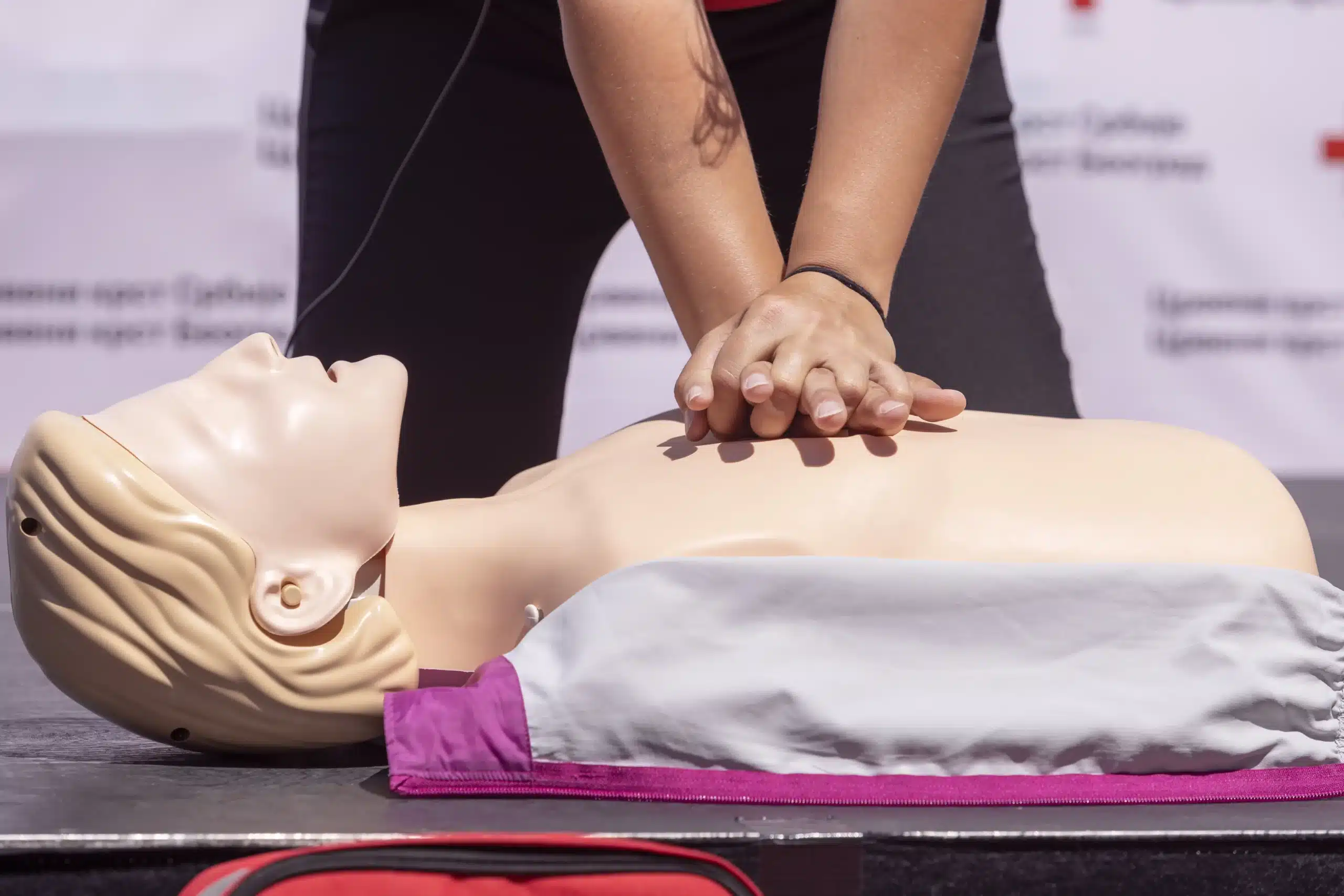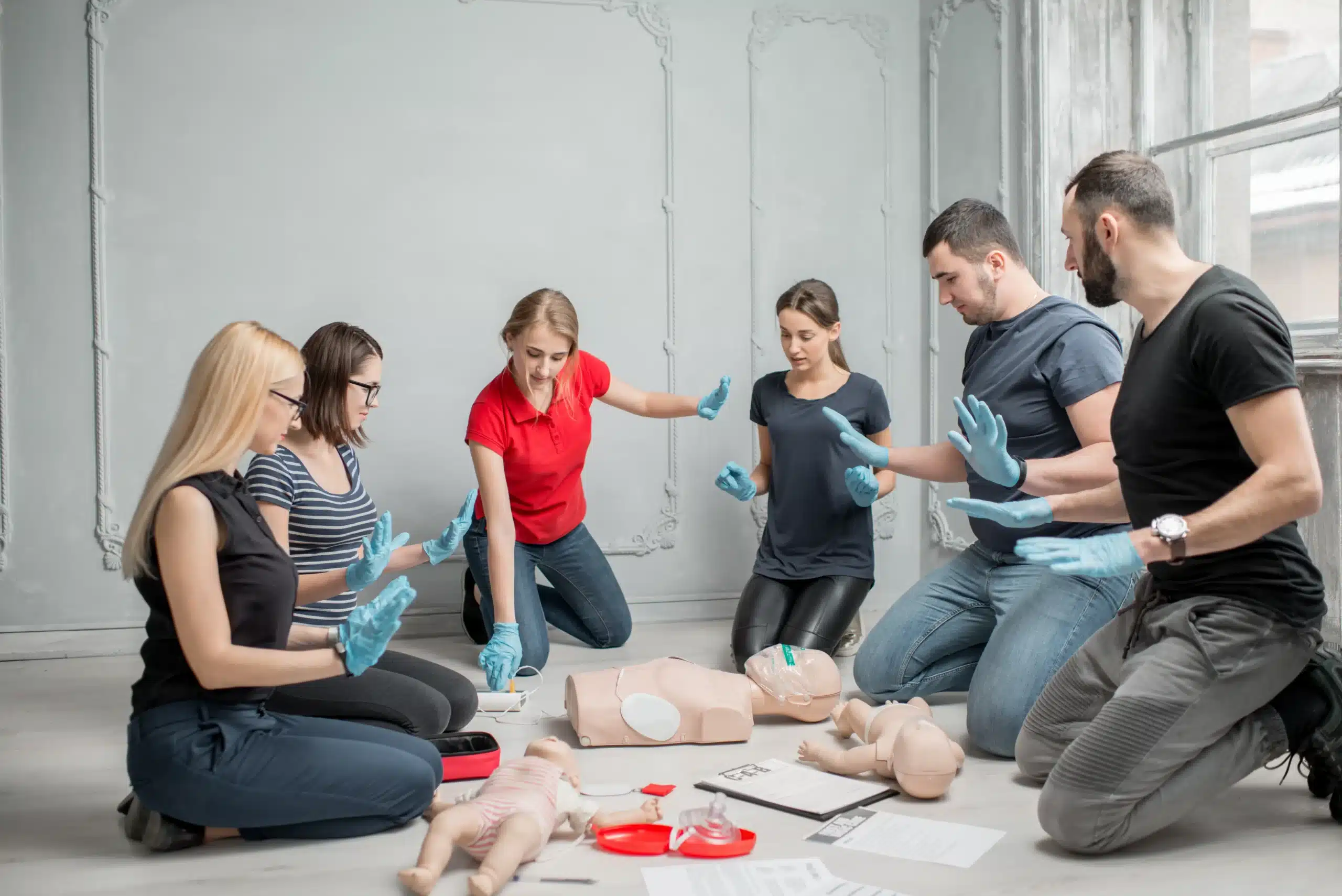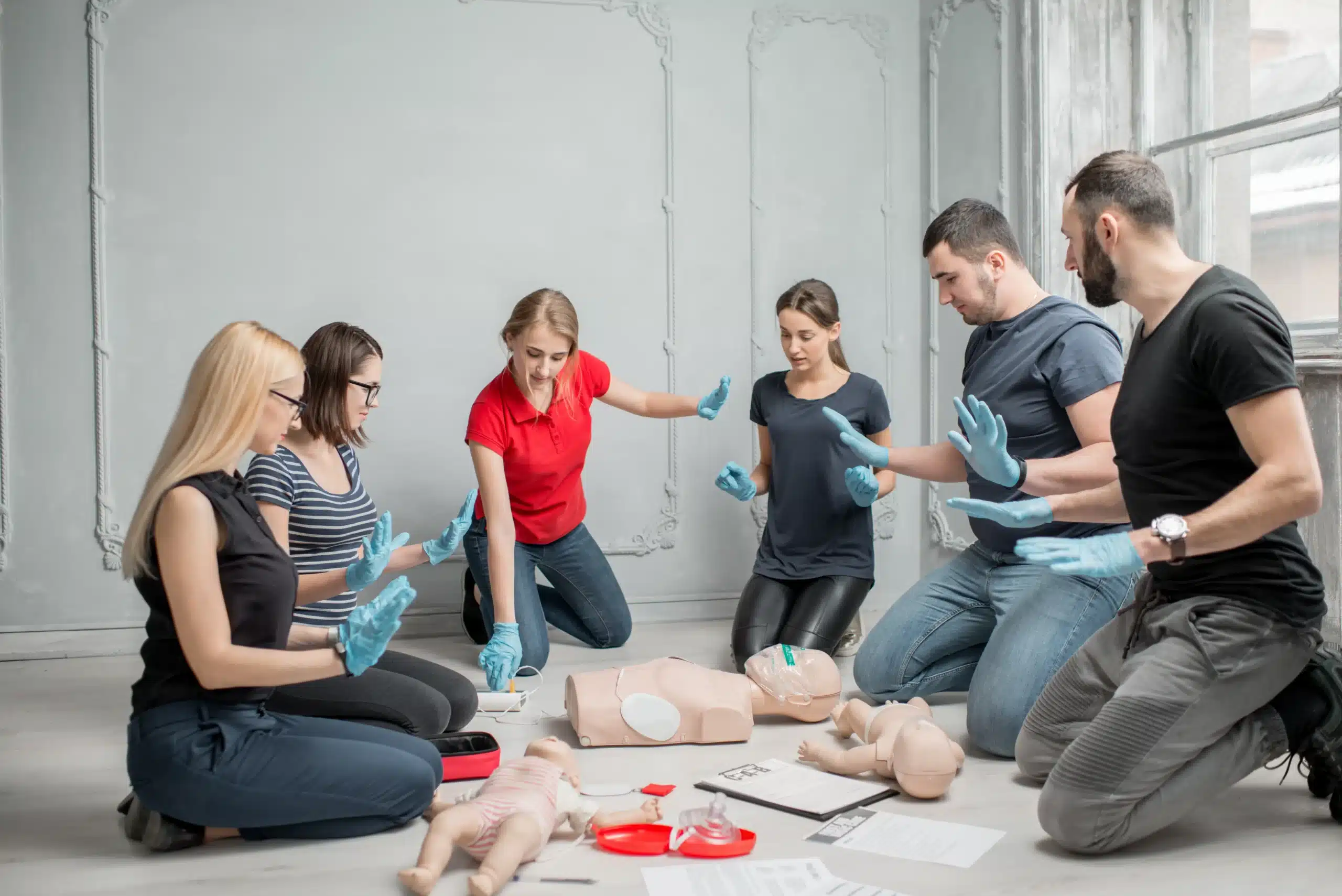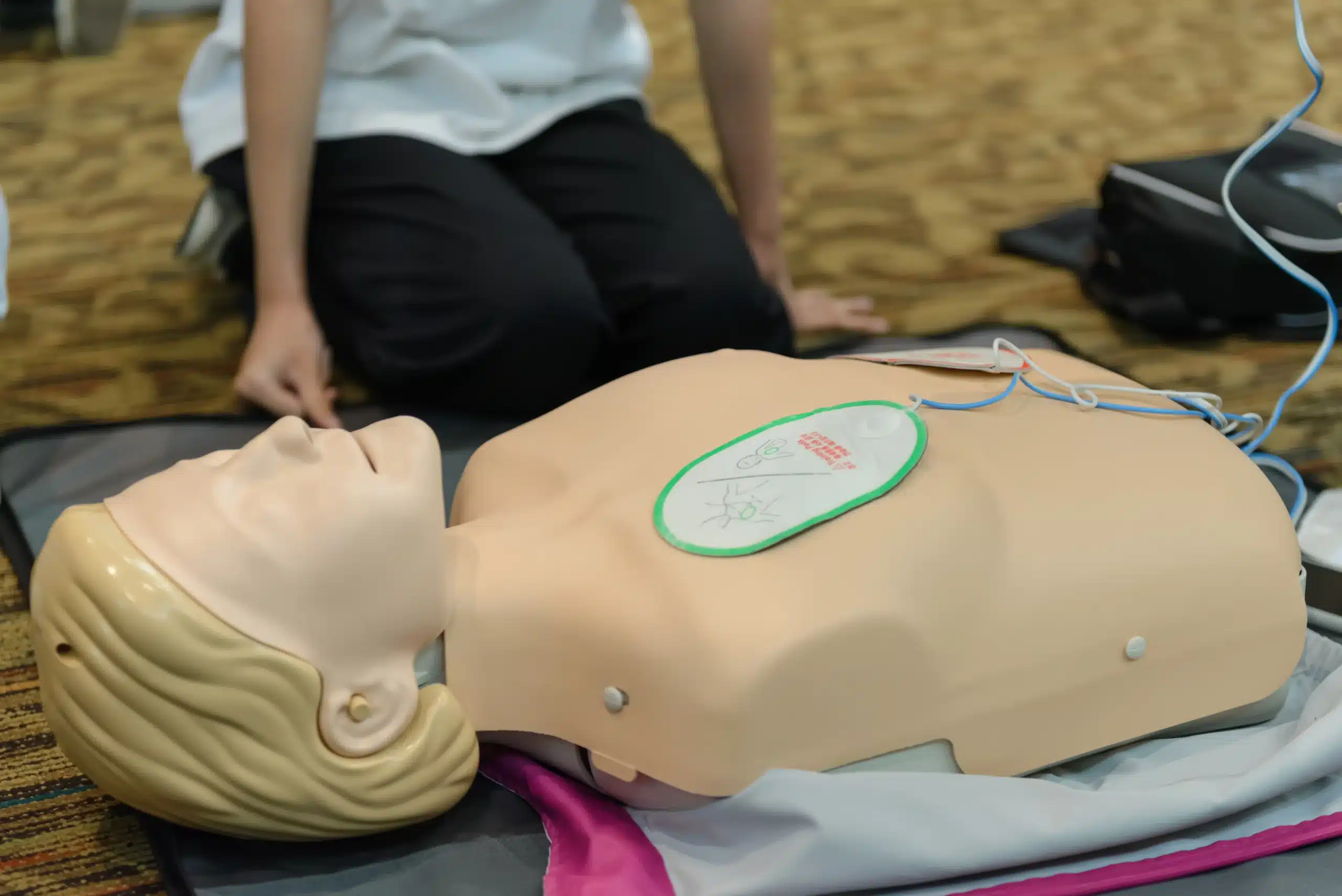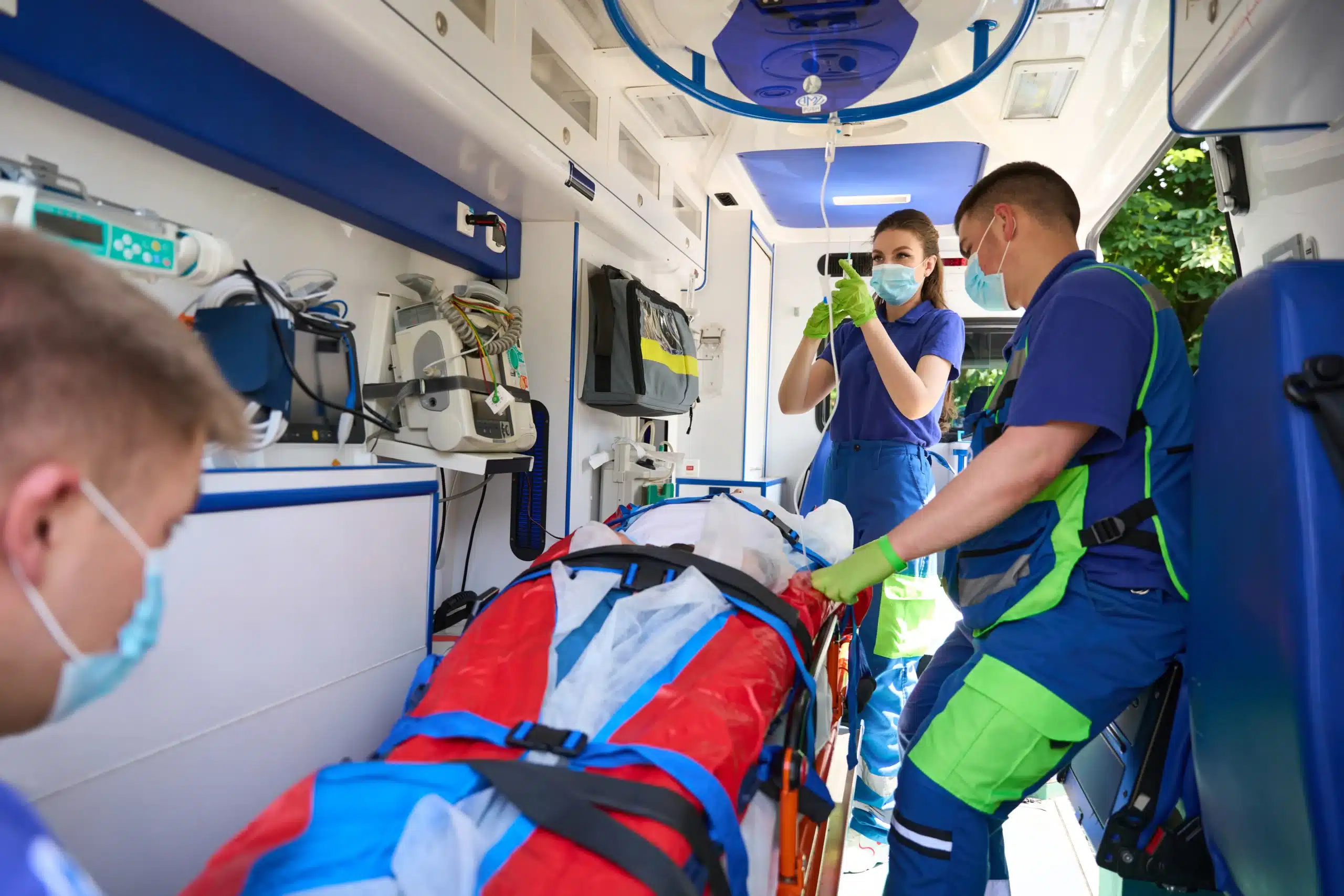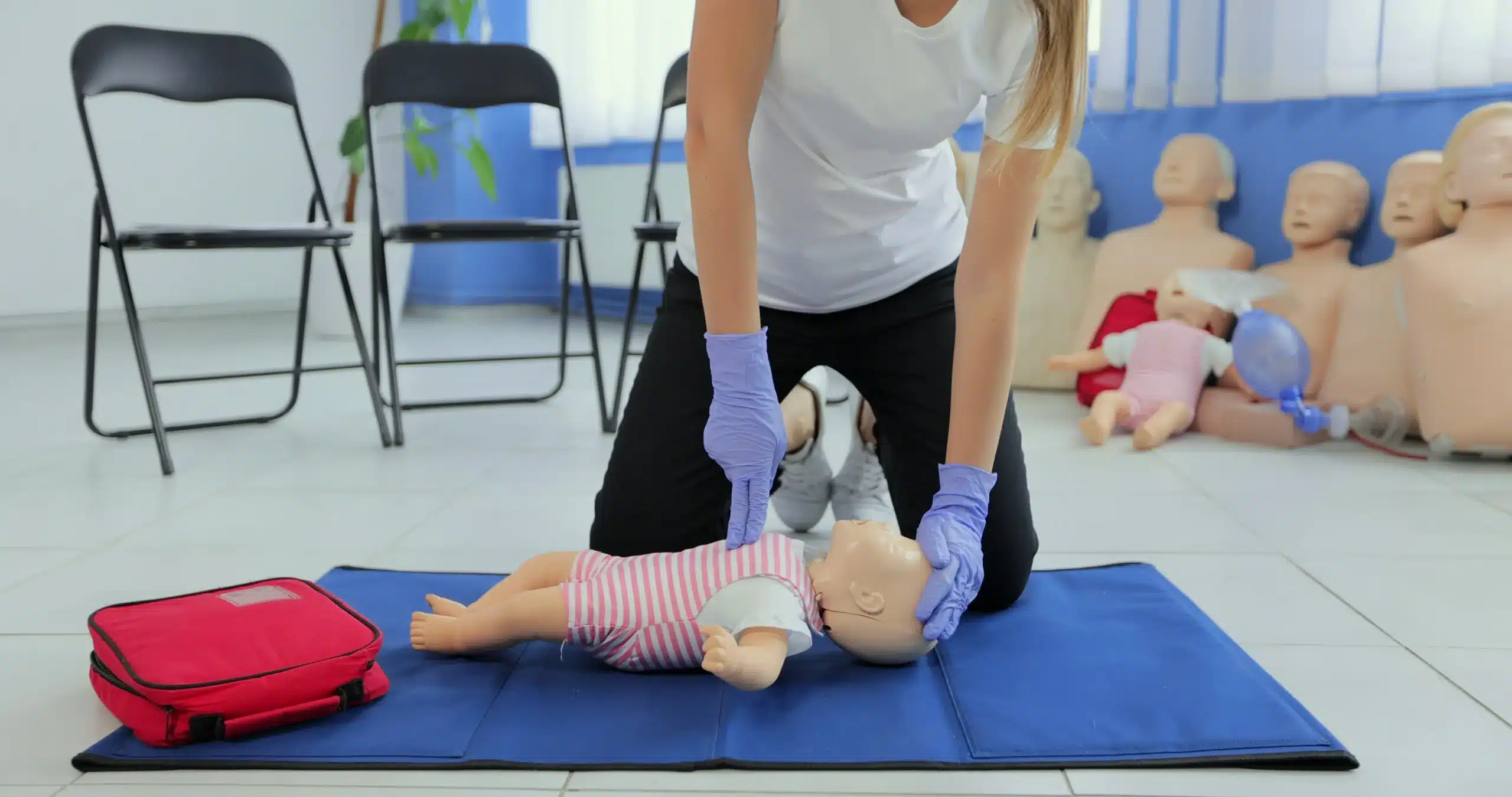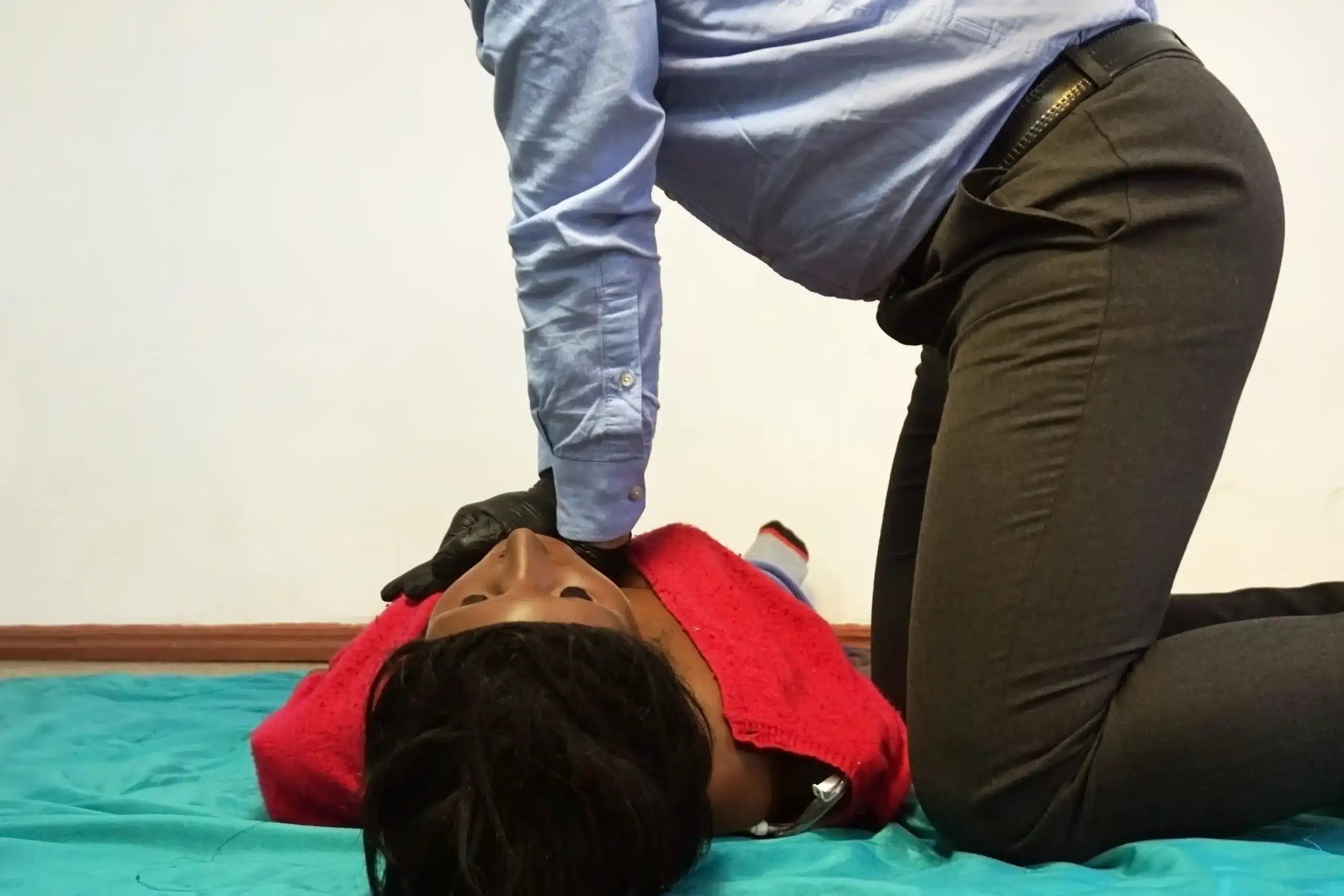Empowering yourself with life-saving skills is one of the most valuable things you can do. Basic Life Support (BLS) training provides the knowledge and confidence to respond effectively in medical emergencies. This guide is your roadmap to finding the right BLS courses in Oakland. We’ll explore the different types of BLS training available, from traditional classroom settings to flexible online options, and highlight reputable providers in Oakland. We’ll also cover course costs, typical duration, and the essential skills you’ll learn. Whether you’re a healthcare provider, a student, or a concerned citizen, this guide will help you navigate the process of getting BLS certified in Oakland.
Key Takeaways
- BLS skills are essential for everyone: Learning BLS equips you to handle medical emergencies confidently, providing vital care until professional help arrives. Explore various course formats to find one that suits your learning style and schedule.
- Select a reputable BLS course provider: Look for accreditation from trusted organizations like the AHA and consider factors such as instructor experience, course format, and alignment with current guidelines. Asking potential providers specific questions about their training methods and feedback processes will help you make an informed decision.
- Certification is an accessible process: Getting BLS certified involves finding a training center, registering for a course, completing the training, and passing a written and practical exam. Maintain your skills and knowledge by renewing your certification every two years.
What is BLS?
Basic Life Support (BLS) is a crucial set of emergency procedures designed to keep someone alive during life-threatening situations like cardiac arrest or respiratory failure. It involves essential skills anyone can learn, from recognizing emergencies and calling 911 to performing CPR and using an AED. BLS also covers basic airway management techniques to help people in distress. Think of it as the foundation of emergency care, providing a critical bridge until paramedics or doctors arrive.
BLS follows a systematic approach to ensure responders can act quickly and efficiently. According to AED Brands, the five key steps are: checking scene safety, checking breathing and pulse, calling 911, using an AED if one is available, and performing CPR. This structured approach helps responders stay calm and focused under pressure, increasing the chances of a positive outcome.
While often associated with healthcare providers, BLS skills empower anyone to respond confidently in critical situations. Knowing BLS can make you a valuable asset in your community and workplace, giving you the tools to potentially save a life. It’s about being prepared and having the confidence to act when it matters most. Online Safety Trainer highlights the importance of BLS training for various professions, but these skills are truly valuable for everyone.
Find BLS Courses in Oakland
Finding the right BLS course in Oakland depends on your learning style and schedule. Luckily, there are a variety of options available, from traditional in-person classes to online and blended learning formats. Let’s explore the different training routes you can take.
In-Person BLS Training
In-person BLS training offers hands-on learning and direct interaction with instructors. This is a great option for those who thrive in a classroom setting and value the opportunity to practice skills in real-time. Safety Training Seminars offers AHA-certified BLS courses throughout the week, making it easier to find a class that fits your schedule. For a streamlined certification process, consider the AHA’s RQI program, a modern approach to resuscitation training. You can also explore other CPR training options in Northern California through this helpful directory.
Online & Blended BLS Learning
If you need more flexibility, online and blended learning might be a better fit. Online BLS courses let you learn at your own pace, which is ideal for busy professionals or those who prefer self-directed study. Adding an online BLS course to your resume can be valuable, especially if you’re new to healthcare. Blended learning combines online coursework with in-person skills sessions, offering a balance of flexibility and hands-on practice. Research suggests that both traditional and online BLS training are effective ways to improve BLS knowledge and skills. Whether you choose in-person or online learning, BLS certification equips you with the skills to respond confidently in medical emergencies.
Top Oakland BLS Providers
Finding the right BLS provider is key to a positive and effective learning experience. Here’s a look at some of the top BLS training options in Oakland:
Safety Training Seminars
Safety Training Seminars offers AHA-certified BLS courses in Oakland. As a woman-owned training center, they prioritize high-quality instruction and flexible scheduling, with classes offered daily. They also provide training in other essential certifications like ACLS, PALS, CPR, and First Aid, making them a convenient option for all your certification needs.
American Red Cross
The American Red Cross is a well-known provider of BLS certification and recertification in Oakland. Geared towards healthcare providers, their courses use real-world scenarios to teach CPR, AED use, and how to relieve airway obstructions for adults, children, and infants. The Red Cross also offers instructor training.
CPR Certification Oakland
CPR Certification Oakland offers AHA-certified CPR and First Aid classes, including BLS, throughout Oakland and the Bay Area. They offer on-site training for groups and provide both CPR-only and combined CPR/First Aid courses.
Oakland Fire Department
The Oakland Fire Department offers CPR and First Aid training to the Oakland community, emphasizing the importance of these skills in emergencies. For more information on BLS course offerings, check their website or contact the department directly.
Alameda County EMS Agency
The Alameda County EMS Agency provides various training programs, including BLS certification, to ensure healthcare providers are prepared for emergencies. Their courses follow the latest guidelines and best practices. Contact the agency or visit their website for more information on their training programs.
BLS Course Costs
Knowing the price range for BLS certification in Oakland helps you budget effectively. This section breaks down the average course costs, additional fees, and potential discounts.
Average BLS Course Prices
BLS course fees in Oakland generally fall between $65 and $85. A basic CPR course typically costs around $65, while a combined CPR and First Aid certification is closer to $85. These courses usually take about three hours to complete, a manageable time commitment. Remember that prices can vary depending on the training provider and included materials. Check with the provider directly for the most up-to-date pricing. At Safety Training Seminars, we offer competitive rates and a low-price guarantee to ensure you get the best value.
Additional Fees & Materials
While the course fee covers the core instruction, be prepared for potential extra costs. Some providers charge separately for certification cards, manuals, or other training materials. The American Red Cross offers various courses, like Wilderness and Remote First Aid or instructor training, each with its own fee structure. Clarifying these costs upfront will prevent surprises.
BLS Discounts & Promotions
Look for opportunities to save on your BLS certification. Many providers offer discounts for groups, students, or returning customers. Check the Red Cross website for current discount codes that could reduce the overall cost. You can also explore options like our RQI classes at Safety Training Seminars, which offer a streamlined and often more affordable path to certification.
BLS Course Duration & Format
Typical Course Length
BLS certification courses typically take about four hours to complete, though this can vary depending on the format you choose. Some streamlined courses clock in closer to three hours. This flexibility lets you select a course that fits both your schedule and preferred learning style.
Flexible BLS Scheduling
Finding a BLS course that works with your busy schedule is easier than ever, thanks to the flexible options offered by many training providers. Safety Training Seminars, for example, offers courses seven days a week throughout Northern California, including locations in and around Oakland. Many providers also offer convenient on-site training for groups. For more information about CPR and first-aid classes near you, check out our Northern California CPR directory.
What You’ll Learn in a BLS Course
This section covers the essential skills and hands-on training you can expect in a BLS course. Whether you’re a healthcare provider or someone wanting to learn lifesaving skills, understanding the components of BLS is crucial.
Key BLS Skills
Basic Life Support (BLS) equips you with the skills to respond to life-threatening emergencies like cardiac arrest and respiratory failure. You’ll learn to recognize these emergencies, activate the emergency response system (by calling 911), and deliver crucial care until professional help arrives. Core BLS skills include CPR, using an Automated External Defibrillator (AED), and providing basic airway and breathing support. These skills are fundamental for anyone working in healthcare and invaluable for anyone who wants to be prepared for emergencies. For more information on BLS, check out this helpful resource.
Hands-On BLS Practice
BLS courses aren’t just about theory; they emphasize practical application. Expect hands-on training scenarios that simulate real-life emergencies. You’ll practice CPR on adult, child, and infant manikins, gaining confidence in chest compressions, rescue breaths, and airway management techniques. You’ll also become familiar with using an AED, a device that can restore a normal heart rhythm. Many courses, like the American Heart Association RQI program, offer a streamlined and efficient learning experience, ensuring you receive your official certification quickly. This practical training is essential for solidifying your skills and preparing you to respond effectively in a real emergency.
BLS Certification & Validity
Understanding the accreditation and renewal process for your BLS certification is crucial to ensure your credentials are valid and recognized by employers.
Accreditation & Recognition
Safety Training Seminars is a woman-owned American Heart Association Training Center offering high-quality BLS, ACLS, PALS, CPR, and First Aid courses in Oakland, CA. Choosing a training center affiliated with a recognized organization like the AHA ensures your certification meets industry standards. The RQI program is a popular and efficient way for medical professionals in Oakland to get their official AHA BLS, ACLS, and PALS certification cards. This program offers a modern approach to resuscitation training and certification.
BLS Renewal
Your BLS certification is typically valid for two years. After this period, you’ll need to renew your BLS certification to maintain your skills and knowledge. Renewal courses often cover updates to guidelines and procedures, ensuring you’re always prepared to provide effective care. Many programs provide resources such as step-by-step guides and handbooks to support your learning and simplify the renewal process. This ongoing training reinforces best practices and keeps you current with advancements in BLS.
Benefits of BLS Certification
Getting your BLS certification is more than just checking a box; it’s an investment in yourself and the well-being of those around you. Whether you’re a healthcare professional, a concerned caregiver, or simply someone who wants to be prepared, BLS training offers significant advantages.
Improve Patient Outcomes
BLS certification equips you with the skills to respond effectively during medical emergencies. From recognizing the signs of a heart attack to performing high-quality CPR, these skills directly translate to better patient outcomes and increased survival rates. BLS training emphasizes early recognition and intervention, giving patients a better chance of recovery. Learn more about the vital role BLS providers play in improving patient care.
Build Confidence in Emergencies
Imagine facing a medical crisis. Would you feel confident and prepared to act? BLS training empowers you to handle such situations with greater assurance. Knowing you have the skills to provide immediate care can make all the difference in a stressful situation. This confidence extends beyond technical skills; it fosters a sense of calm, allowing you to think clearly and act decisively when every second counts. Studies show how BLS training improves confidence and preparedness in emergencies.
Advance Your Healthcare Career
In a competitive healthcare field, BLS certification is a valuable asset. It demonstrates your commitment to patient care and your dedication to maintaining high standards of practice. For those starting their healthcare careers, BLS certification can strengthen your resume, showcasing your readiness to handle critical situations. Even seasoned professionals benefit from keeping their BLS certification current, as it signifies ongoing professional development. It can open doors and enhance your credibility within the medical community.
Choose the Right BLS Course
Finding the right BLS course is crucial for gaining the skills and confidence to handle medical emergencies. It’s more than just a certification; it’s an investment in training that prepares you to make a real difference. This section will guide you through key factors and questions to consider when making your decision.
Factors to Consider
When selecting a BLS course, the quality and credibility of the training provider should be your top priorities. Look for providers accredited by reputable organizations like the American Heart Association (AHA). Safety Training Seminars is a woman-owned AHA Training Center offering high-quality BLS courses in Oakland. This local focus ensures convenient access to top-tier training. Also, consider the training method. The AHA’s RQI program, known for its efficiency, offers a modern approach to BLS certification.
Another important factor is the course format. Do you prefer in-person, hands-on learning, or does the flexibility of online or blended learning better suit your needs? Consider what will maximize your learning. Finally, check if the course aligns with the latest AHA guidelines. Healthcare practices evolve, so your training should reflect current best practices.
Questions to Ask
Before you sign up for any BLS course, asking a few key questions can help you make an informed choice. First, consider your learning style and previous experience. If you’ve taken a BLS course before, ask the provider how their course will build upon your existing skills. Reviewing your past training can help you find a course that complements what you already know.
Next, inquire about the feedback process. Constructive feedback is essential for skill development. Also, ask about the instructors’ qualifications. Experienced and certified instructors can significantly improve your learning. Finally, consider the overall value. Does the course offer a balance of quality instruction, convenient scheduling, and a reasonable price? Choosing the right BLS course is an investment in your skills and your ability to respond effectively in critical situations.
Get BLS Certified
Getting your BLS certification is straightforward. Here’s a simple breakdown of the process:
Steps to Certification
- Find a Training Center: Start by researching various BLS training providers in your area. Look for classes offered by trusted organizations like the American Heart Association. Consider factors like location, schedule, and the overall reputation of the provider. Safety Training Seminars, for example, offers convenient BLS courses in Northern California.
- Register for a Course: Once you’ve chosen a provider, register for a BLS course that fits your schedule. Many providers offer various class times and formats, including weekend and evening options. Check if the training center offers the RQI program, a streamlined approach to BLS certification.
- Complete the Training: BLS courses typically involve a combination of classroom instruction, hands-on practice, and skills testing. You’ll learn essential life-saving techniques, including CPR, how to use an AED, and how to relieve choking. Active participation is key to mastering these skills.
- Pass the Exam: After completing the training, you’ll need to pass a written and practical exam to demonstrate your BLS proficiency. Your instructors will prepare you thoroughly for these assessments.
- Receive Your Certification: Upon successful completion of the course and exam, you’ll receive your BLS certification card. This card is typically valid for two years. Remember to keep your certification current by taking a renewal course before it expires.
More BLS Resources
Want to learn more? These resources offer additional information:
- Low Price Guarantee: Find affordable BLS training options.
- CPR Training Locations: Explore CPR training providers in Northern California.
- Contact Us: Reach out to Safety Training Seminars with any questions.
Related Articles
- BLS Classes in Oakland: The Complete Guide – San Francisco Bay Area CPR Classes
- BLS Classes in Sacramento: Your Complete Guide – San Francisco Bay Area CPR Classes
- CPR Training in Northern California: A Complete Guide – San Francisco Bay Area CPR Classes
- BLS CPR Classes in Bay Area, CA – San Francisco Bay Area CPR Classes
- CPR Training in Sacramento: Your Ultimate Guide – San Francisco Bay Area CPR Classes
Frequently Asked Questions
Is BLS certification right for me, even if I’m not a healthcare professional? Absolutely! While often associated with healthcare, BLS skills are invaluable for anyone. Knowing how to respond to emergencies like choking or cardiac arrest can make you a vital resource at home, in your workplace, or anywhere in your community. It’s about empowering yourself to potentially save a life.
What’s the difference between BLS and CPR? CPR, or Cardiopulmonary Resuscitation, is actually part of BLS. BLS encompasses a broader range of skills, including recognizing emergencies, activating the emergency response system (calling 911), and providing basic airway management, in addition to CPR. Think of BLS as the comprehensive toolkit, with CPR as one of the essential tools inside.
How long does it take to get BLS certified, and how long does the certification last? BLS courses are designed to be efficient, typically taking around four hours to complete, though some streamlined options can be shorter. Once certified, your BLS credentials are valid for two years. Staying current with the latest guidelines is important, so remember to renew your certification before it expires.
What if I’m nervous about the skills testing? It’s completely normal to feel a little apprehensive about the skills testing. BLS courses are designed with this in mind. Instructors provide ample opportunity for hands-on practice and personalized feedback, helping you build confidence and master the techniques. The goal is to prepare you to respond effectively in a real emergency, not to make you feel overwhelmed.
How do I choose the right BLS training provider? Look for providers accredited by reputable organizations like the American Heart Association. Check for convenient locations and schedules, and don’t hesitate to ask about instructor qualifications and the overall course structure. Reading reviews and comparing prices can also help you find the best fit for your needs and budget.


